How the district heating system works
*District heating (also known as heat networks or teleheating) is a system for distributing heat generated in a centralized location through a system of insulated pipes for residential and commercial heating requirements such as space heating and water heating.*
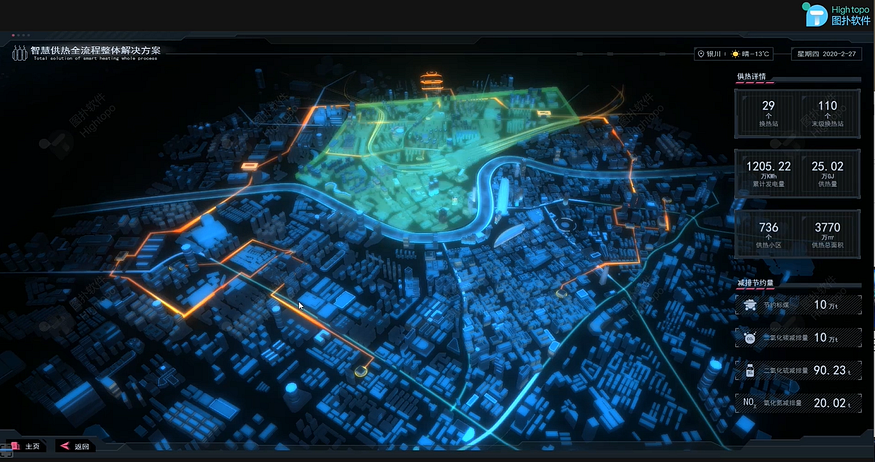 *Click the picture to check full video*
*Click the picture to check full video*
The most popular heating system is individual gas boiler. However this is not the most efficient method. District heating is the concept of one large central boiler instead of many individual boilers. And this is usually so-called energy center. There are many heat source for the energy center such as gas combined heat and power energy from waste or renewable energy sources like heat pumps biomass and anaerobic digestion.

Hightopo visualization solution simulates the whole city layout and utilizes the 3d model and 3d animation to indicate the pipeline. The hot water travels through an underground insulated pipe network to heat interface units located in each building.
How it works
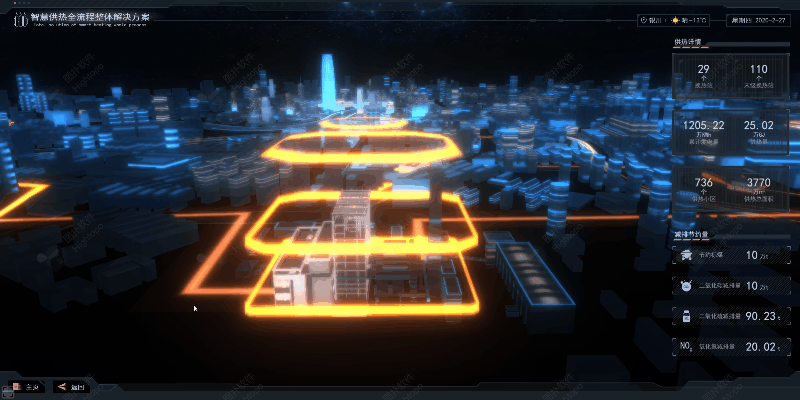
The heat is often obtained from a cogeneration plant burning fossil fuels or biomass. District heating replaces individual boilers, it uses less energy, costs less, is environment-friendlier and makes cities more pleasant places.
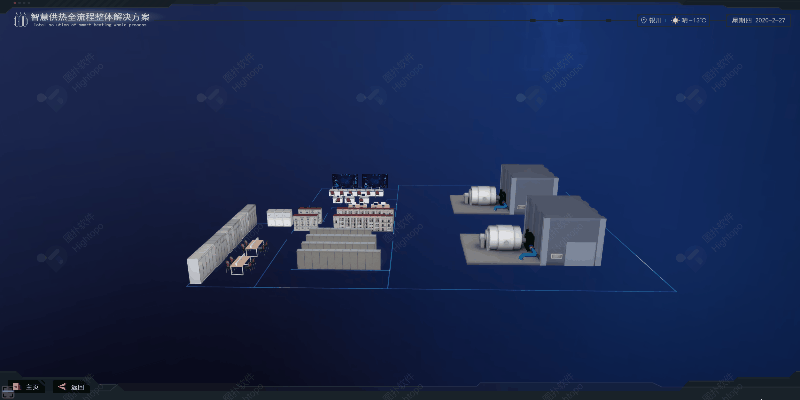
Inside the cogeneration plant, there usually be a control room, in here heat production and distribution are monitored and controlled around the clock. With the real-time data, hightopo empower the plant operators to get an actionable insight.

The heat travels, as hot water or steam, through an underground pipe system. This is the primary circuit. then it reaches substations in apartment buildings, office blocks, public buildings and sometimes industrial districts or shopping centers. Substations are dotted around the network.
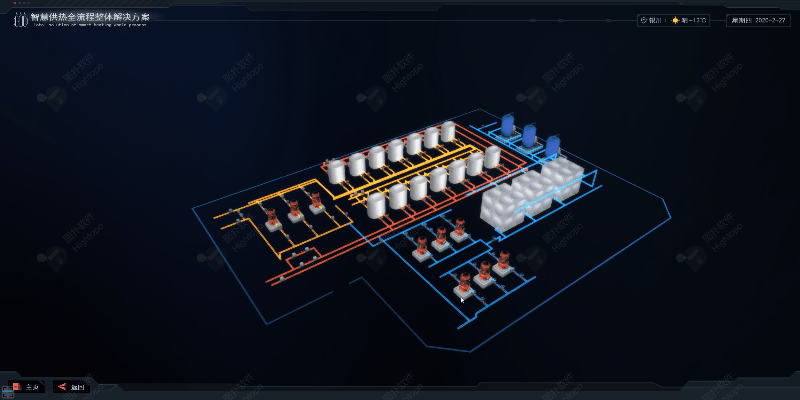
The heat pump suppliers energy for district heating and cooling by capturing waste heat from treated wastewater. The district heating water running in the distribution network reaches the customers at 70–115 degrees and returns to be heated once it has cooled down. The hot water reserve is used to balance out peak demand for example in the mornings. this eliminates the need to startup oil-powered heating substations for moments where it needs.
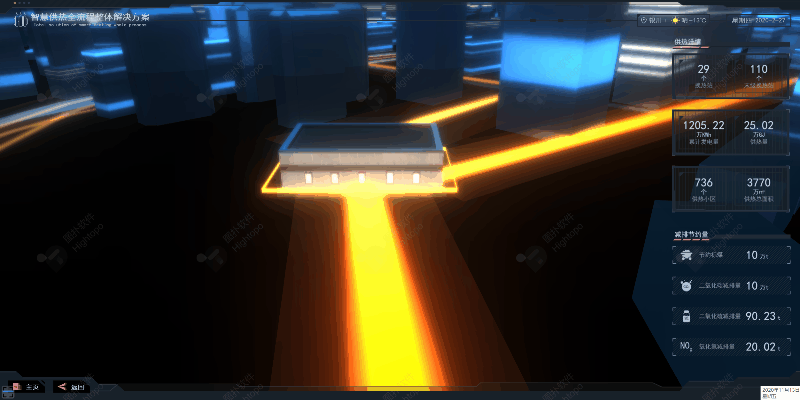
Each substation has a heat exchanger that transfers the heat from the primary circuit to the secondary circuits in buildings. Inside, they split into heating circuits and hot water circuits. The heat then warms up the building, through underfloor systems and radiators for instance, and other appliances.
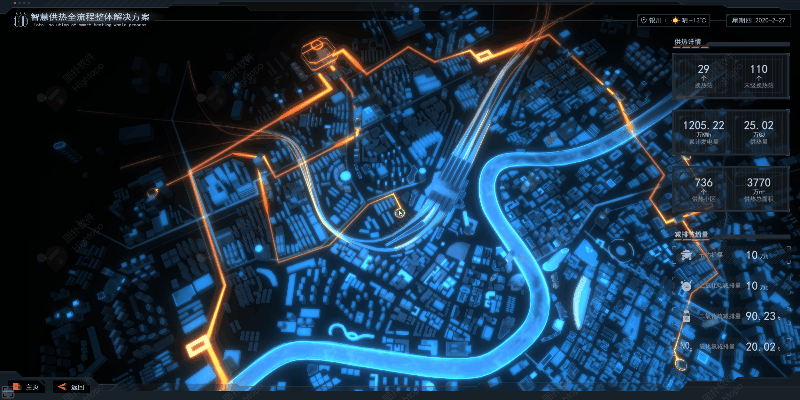
The network is continuously being extended and serviced. The old sections of the network are repaired following a maintenance plan. We highlighted the area that one heat exchanger can cover. So that once one place is down we have an intuitive view of which exchanger should go for maintenance and service.
Why Hightopo Visualization Solution
Hightopo developed a powerful web-based 2D and 3D rendering engine which provides rich display effects for data visualization. With this, we provide our client a light-weight, cross-platform, responsive, fully-interactive digital twin solution. Empower our clients to turn real-time data into insights for better, faster decision-making. As the nature of web-based feature, there’s no need for plugins or downloads, it just works seamlessly on any modern browser & device.
smart heating system deep integrated network, information, and intelligent digital technology and heating facilities. Aiming for energy saving, consumption reduction, and cost effective, tailored made for heating companies.
It achieves monitoring of the entire heating system from the pipe network to the indiviual end-user; improves process & operation management efficieny; enable remote monitoring and unattended operation. Monitoring facilities status and exponentially increasing efficiencies over time, unlocking additional value from existing assets, dramatically lowering maintenance and operating costs using physics and analytics to eliminate unplanned downtime.
With the lowest cost and highest efficiency, Hightopo meets clients needs for greatest extent, promotes the efficiency and conservation of energy use, and achieves the goal of heating energy saving to the greatest extent.